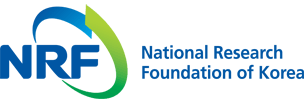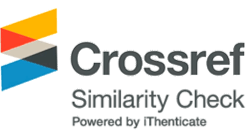-
General Article

- A Case study of the green building promotion support program for carbon neutrality in the building sector
- Seongjo Wang
- Green remodeling of aging buildings is a key strategy for achieving carbon neutrality in the building sector. This study analyzed the energy-saving …
- Green remodeling of aging buildings is a key strategy for achieving carbon neutrality in the building sector. This study analyzed the energy-saving effects of the Green Building Promotion Support Program in Suwon, Gyeonggi Province, South Korea. Using actual project data from 2016 to 2021 combined with field surveys, an evaluation model was developed for energy performance assessment, and the ECO2 simulation tool was applied to analyze five construction categories: window replacement, external insulation, internal insulation, lighting, and boiler replacement. The results showed that window replacement delivered the greatest energy savings (19.40%–20.86%), followed by external insulation (6.40%–12.04%), internal insulation (4.26%–9.13%), lighting (4.48%–6.88%), and boilers (1.56%–1.77%). Detached houses constructed before 1979, prior to the introduction of insulation standards, generally exhibited greater savings; however, lighting achieved higher savings in post-1980 houses, as reduced heat gains from efficient fixtures increased heating demand in winter. While external insulation recorded the highest relative improvement in thermal transmittance, windows achieved a far greater absolute reduction, underscoring the importance of building-level evaluations that account for absolute performance. This study demonstrates that improvements to the building envelope—particularly windows and insulation—achieve the largest energy savings. It is expected that the findings will contribute to optimal decision-making in future support programs for aging buildings. - COLLAPSE
-
General Article
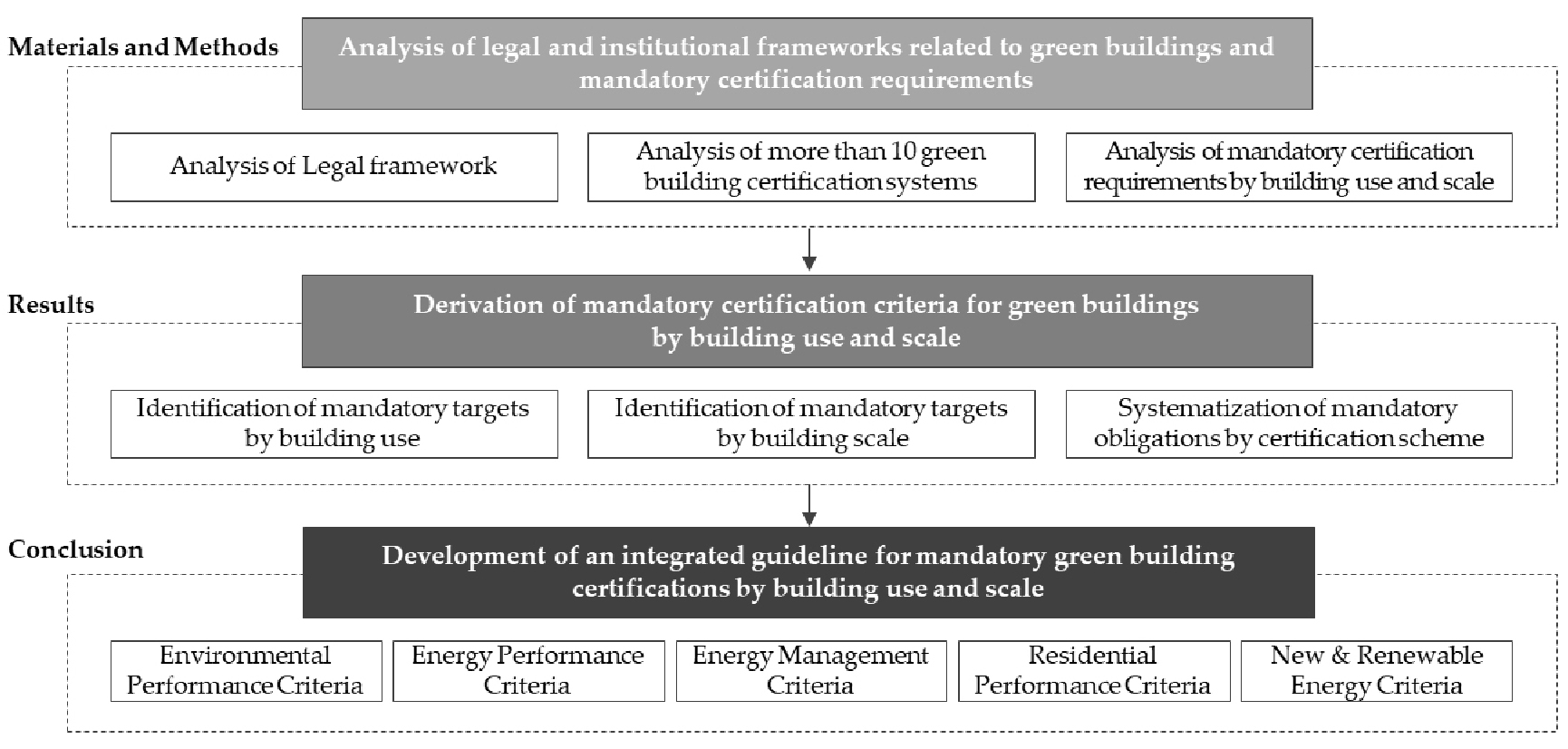
- Development of an integrated green building guideline based on the analysis of Korea’s green building regulatory framework
- Seongjo Wang and Hyeongjae Jang
- Many advanced economies operate certification systems to realize carbon neutrality in the building sector. In Korea, multiple schemes such as the Green …
- Many advanced economies operate certification systems to realize carbon neutrality in the building sector. In Korea, multiple schemes such as the Green Standard for Energy and Environmental Design (G-SEED) and Zero Energy Building (ZEB) certification have been introduced, yet the excessive number of certification types and fragmented legal framework make it difficult for stakeholders to determine mandatory obligations. Accordingly, this study develops an integrated green building guideline by analyzing Korea’s regulatory framework and more than ten certification systems, systematically deriving thresholds according to building use (residential vs. non-residential) and scale (total floor area and number of units). The results present a four-grade classification system—Grade A to D for both residential and non-residential buildings—and identify five evaluation criteria: Environmental Performance, Energy Performance, Energy Management, Residential Performance, and New and Renewable Energy. The proposed guideline provides a structured and practical framework enabling stakeholders—including building owners, architects, and contractors—to identify certification obligations during the design and planning stage, thereby enhancing decision-making efficiency and supporting the broader implementation of carbon-neutral and sustainable buildings in Korea. - COLLAPSE
-
General Article
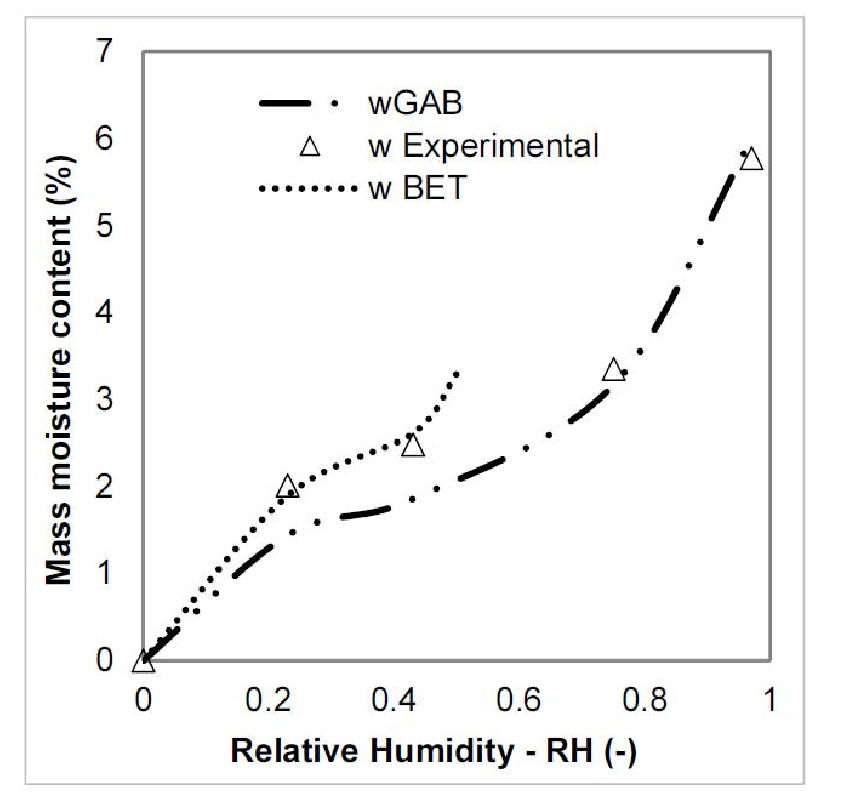
- Enhancing energy efficiency in sustainable construction: A comparative study of hemp concrete, polystyrene concrete, and conventional concrete
- Ali Chikhi, Malek Hadji and Azeddine Belhamri
- The transition to sustainable construction materials is a critical pathway for reducing global energy consumption and mitigating climate change. This study evaluates …
- The transition to sustainable construction materials is a critical pathway for reducing global energy consumption and mitigating climate change. This study evaluates the potential of hemp concrete and polystyrene concrete as energy-efficient alternatives to conventional concrete. Their hygrothermal performance was assessed through detailed numerical simulations under identical climatic conditions, using a physical model of coupled heat and moisture transfer to capture their thermophysical behavior. The findings are compelling: hemp concrete can reduce heat loss through walls by up to 78%, while polystyrene concrete achieves savings of approximately 37%. Beyond thermal performance, hemp concrete exhibits outstanding moisture-regulating capacity, enhancing indoor comfort and preventing excessive humidity. Nevertheless, its mechanical strength remains insufficient for load-bearing structures. Polystyrene concrete, though less effective in thermal reduction, offers distinct advantages in terms of lightweight characteristics and ease of application. Collectively, these materials have the capacity to significantly enhance building energy efficiency, improve occupant well-being, and lower heating and cooling demands—benefits that can translate into tangible operational cost reductions. By highlighting their environmental relevance and economic potential, this research advocates for the broader adoption of hemp and polystyrene concrete in sustainable, non-structural applications, contributing to the evolution of green architecture. - COLLAPSE
-
General Article
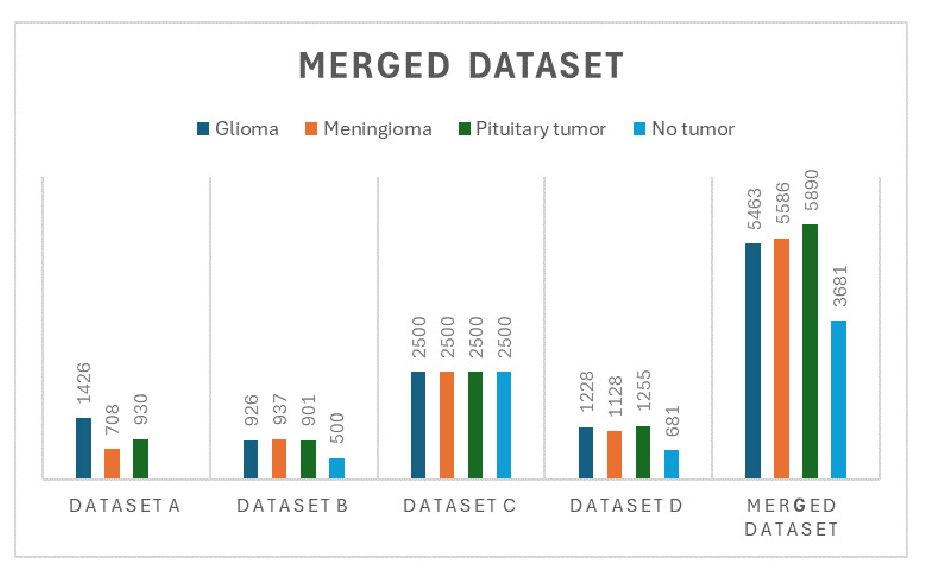
- Sustainable approaches in medical imaging: Enhanced MRI-based brain tumor classification using transfer learning for urban health applications
- Ambuj Kathuria, Deepali Gupta and Mudita Uppal
- Improving patient outcomes and enabling individualized treatment plans depend heavily on early brain tumor diagnosis. To customize treatments according to tumor kind, …
- Improving patient outcomes and enabling individualized treatment plans depend heavily on early brain tumor diagnosis. To customize treatments according to tumor kind, size, and location, brain tumors must be precisely segmented and classified. Even though deep learning and artificial intelligence have transformed the usage of magnetic resonance imaging (MRI) for identification of tumor, developing a reliable and extremely accurate model is still difficult. By using deep neural network topologies for multi-classification of brain tumor, this study tackles these issues. To improve the models’ robustness and generalizability, four benchmark datasets were combined for training and testing. The authors utilized metrics including accuracy, recall, precision and area under curve (AUC) to evaluate performance of ResNet101, VGG-16, VGG-19 and EfficientNetB0 models. ResNet101 outperformed other architectures such as VGG-16 (99.36%), VGG-19 (99.33%) and EfficientNetB0 (98.74%), with an outstanding accuracy of 99.94% among the tested models. These results demonstrate the potential of ResNet101 as a reliable method for automatically identifying and categorizing brain tumors in clinical environments. This study emphasizes sustainable approaches in medical imaging by leveraging transfer learning techniques to improve model efficiency and reduce computational costs. Furthermore, these advancements hold potential for urban health applications, offering scalable AI-driven diagnostic solutions for diverse healthcare infrastructures. In order to improve prognosis and enable individualized therapy, this cutting-edge system promises to expedite diagnostic procedures and allow medical practitioners to quickly and precisely identify brain tumors from MRI scans. - COLLAPSE
-
General Article
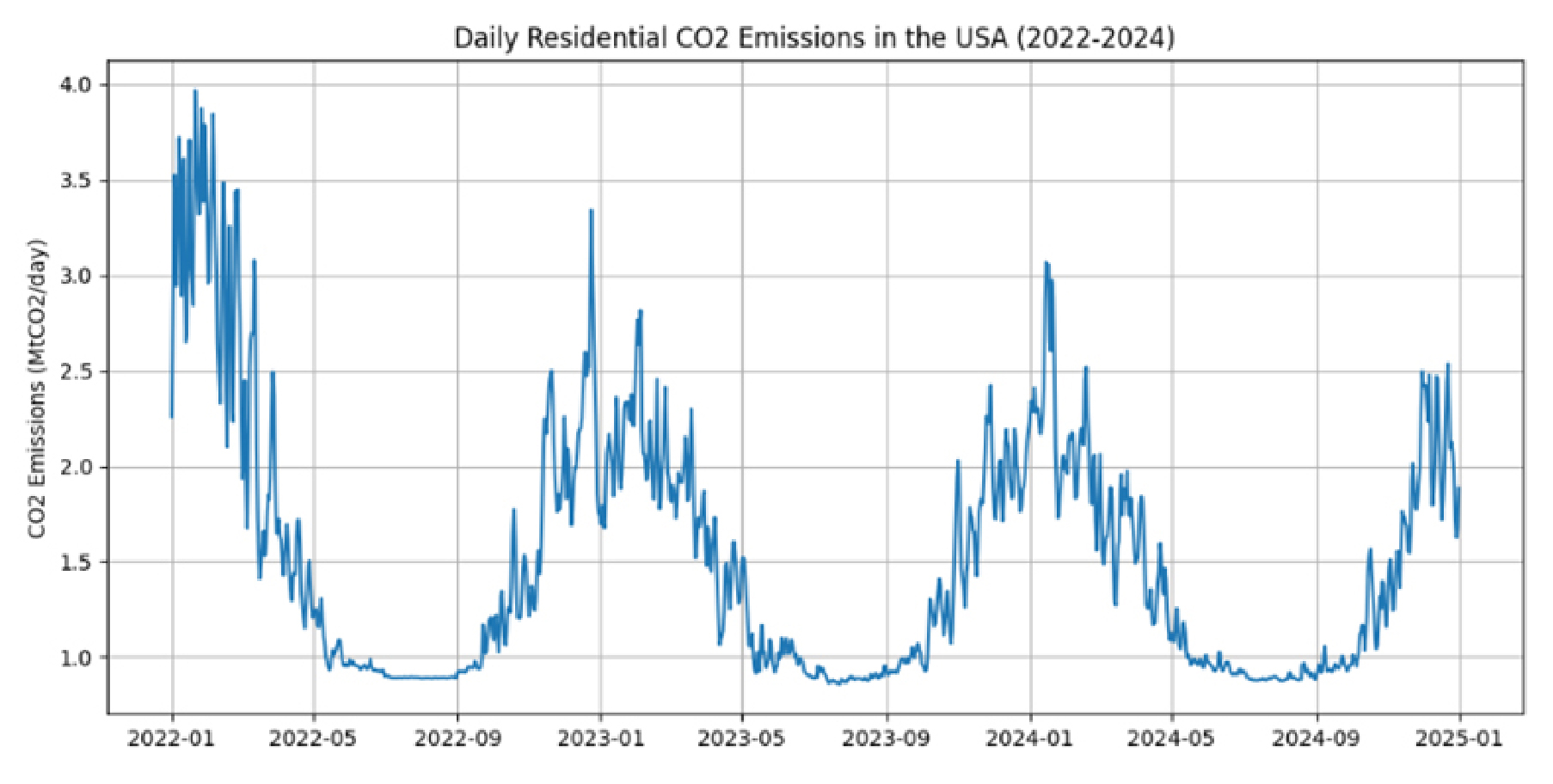
- Predicting residential CO2 emissions: Machine learning and deep learning approaches for short-term forecasting
- Maryam Pournaghi Keykele and Mehdi Ravanshadnia
- The residential sector is a major contributor to global greenhouse gas emissions, especially in high- energy-consuming countries like the United States. While …
- The residential sector is a major contributor to global greenhouse gas emissions, especially in high- energy-consuming countries like the United States. While previous studies have typically focused on long-term or annual emission trends, this research addresses the urgent need for accurate short-term forecasting by predicting daily CO2 emissions. The study compares the performance of six traditional machine learning models—Decision Tree, Random Forest, Ridge Regression, Gradient Boosting, Support Vector Regression, and XGBoost—with a Long Short-Term Memory (LSTM) deep learning model. All models were trained and evaluated using three years of daily U.S. residential CO2 emission data, with careful attention to temporal consistency and seasonal variability. Among the models tested, LSTM demonstrated the highest predictive accuracy, effectively capturing both short-term dependencies and seasonal fluctuations. Unlike traditional models, which heavily relied on engineered lag features, the LSTM model learned temporal patterns directly from sequential data. SHAP analysis further supported these findings, showing that traditional models depended predominantly on the previous day’s emissions, while LSTM dynamically distributed importance across a seven-day window. These results emphasize the effectiveness of deep learning for time-series emission forecasting and offer practical guidance for developing responsive environmental policies. The study also suggests that short-term historical data may be more impactful than extensive archives for forecasting near-term emissions in residential settings. - COLLAPSE
-
General Article
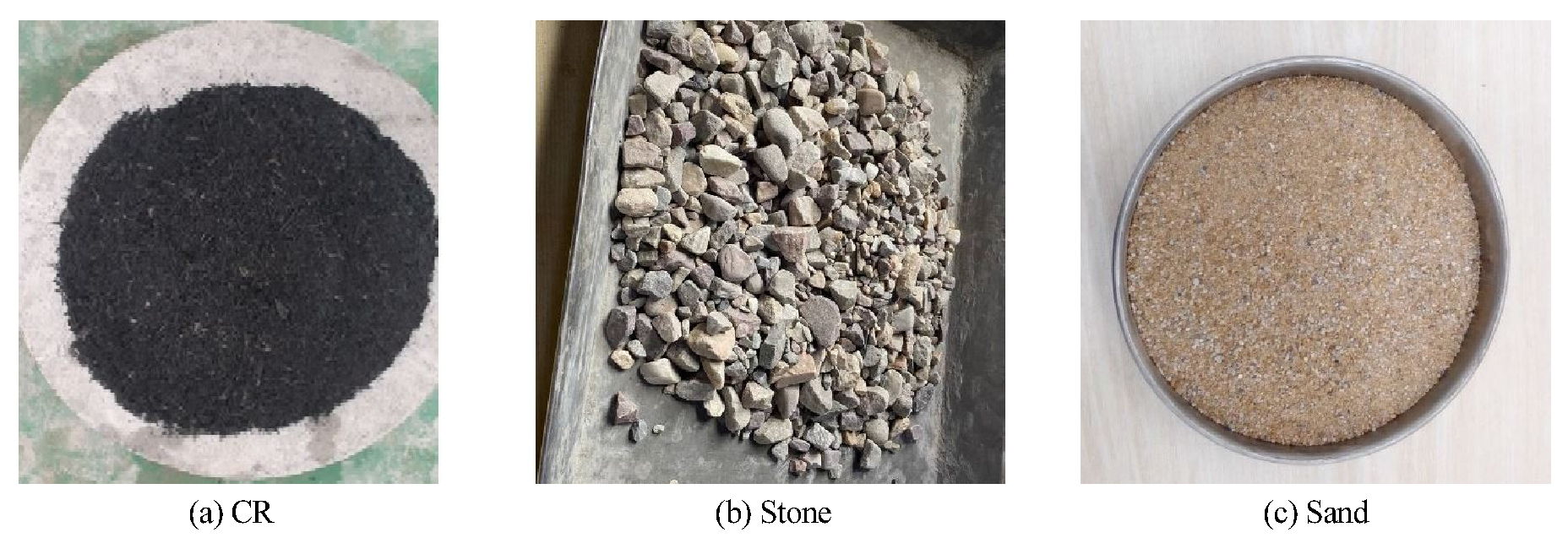
- Effect of water-reducing admixtures on the mechanical performance of crumb rubberized concrete
- Abu Hasan, Md. Nadiruzzaman, Rituparna Sarker, Anik Roy Pranto and Aktaruzzaman Sharif
- The number of waste tires has been rising rapidly due to the global increase in motorized vehicles, posing a major environmental concern. …
- The number of waste tires has been rising rapidly due to the global increase in motorized vehicles, posing a major environmental concern. Using Crumb Rubber (CR) recycled from these tires in concrete production offers a potential and sustainable solution to this issue. This study investigates the effect of substituting sand with CR at 5%, 10%, and 15% volumes, both with and without admixtures, on the mechanical properties of concrete. In total, 48 cylinders, 24 flexural beams, and 12 small-scale reinforced concrete columns were tested to assess unit weight, compressive strength, split tensile strength, flexural strength, and axial load capacity of the column. Test results indicated that CR inclusion generally reduced mechanical properties, while using admixtures significantly enhanced strength. The axial load capacity of columns increased by approximately 15% compared to NC when admixtures were used with 5% and 10% CR. In contrast, capacity declined by 6% when 15% CR was used, even with admixture. These findings suggest that combining CR with admixtures provides a promising approach to sustainable waste management and offers potential for enhancing the structural performance of Crumb Rubberized Concrete (CRC). - COLLAPSE
-
General Article
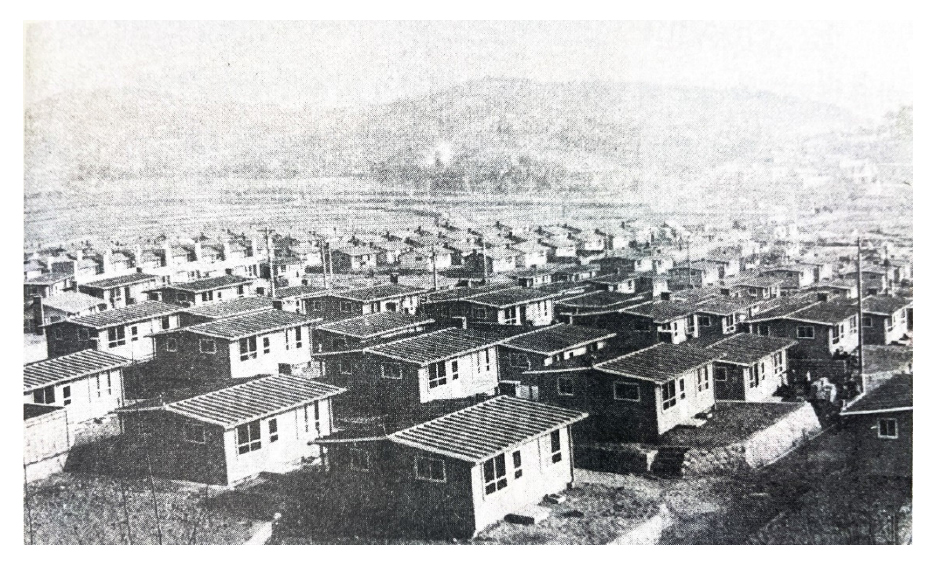
- Historical sustainability and the embodiment of ‘traditionality’ in Korean contemporary architecture: Critical perspective based on Kenneth Frampton’s theory of ‘Critical Regionalism’
- Changhyun Lim and Myengsoo Seo
- This research explores the ‘traditionality’ on Korean contemporary Architecture around the 21st century. The introduction of modern architecture in Korea contributed to …
- This research explores the ‘traditionality’ on Korean contemporary Architecture around the 21st century. The introduction of modern architecture in Korea contributed to addressing challenges such as the need for rapid postwar development by providing sufficient housing in a short period after the Korean War. However, these modern buildings, which were built after the 1950s with mostly Western- oriented-style and technologies, were insufficient encompassing architecture’s identity. Therefore, Korean architecture had lost its authentic traditionalism and regionalism because these modern buildings were built without considering the criticism and solving cultural agonies in Korean context. This lack of traditionalism and regionalism in Korean architecture had been discussed since the 1960s from a few Korean architects, but they had a hard time in incarnating Korean architecture’s identity due to the economy-first policy until 1980s. However, from the 1990s a few Korean contemporary architects such as the 4·3 Group began to seriously think about synthesizing the traditionalism and modernity. Their efforts could be understood the context of historical sustainability which means the history of architecture from tradition to modern and post-modern through the expression of rationalism in architecture. In this sense, this study seeks to find out how ‘traditionality’ is embodied into contemporary architecture after 1990s. In order to scrutinize the originality and its characteristics, this study examines three buildings constructed after 1990 that effectively embody a sense of traditionality: Sujoldang by Hyo-sang Seung, Yeounheon by Kyung-guk Woo, and the Whanki Museum by Kyu-sung Woo. Through this, this research tried to examine the traditional design elements of contemporary architecture, in which internationalism and tradition are dialectically viewed. Moreover, these buildings were reviewed from the perspective of Kenneth Frampton’s “Critical regionalism” which played a significant role in reflecting the identity of architecture from the 1980s in the West. This study helps Korean architecture establish principles in the traditional element of architectural design, and further to establish Korean architecture’s identity between the tradition and modernity. - COLLAPSE
-
General Article
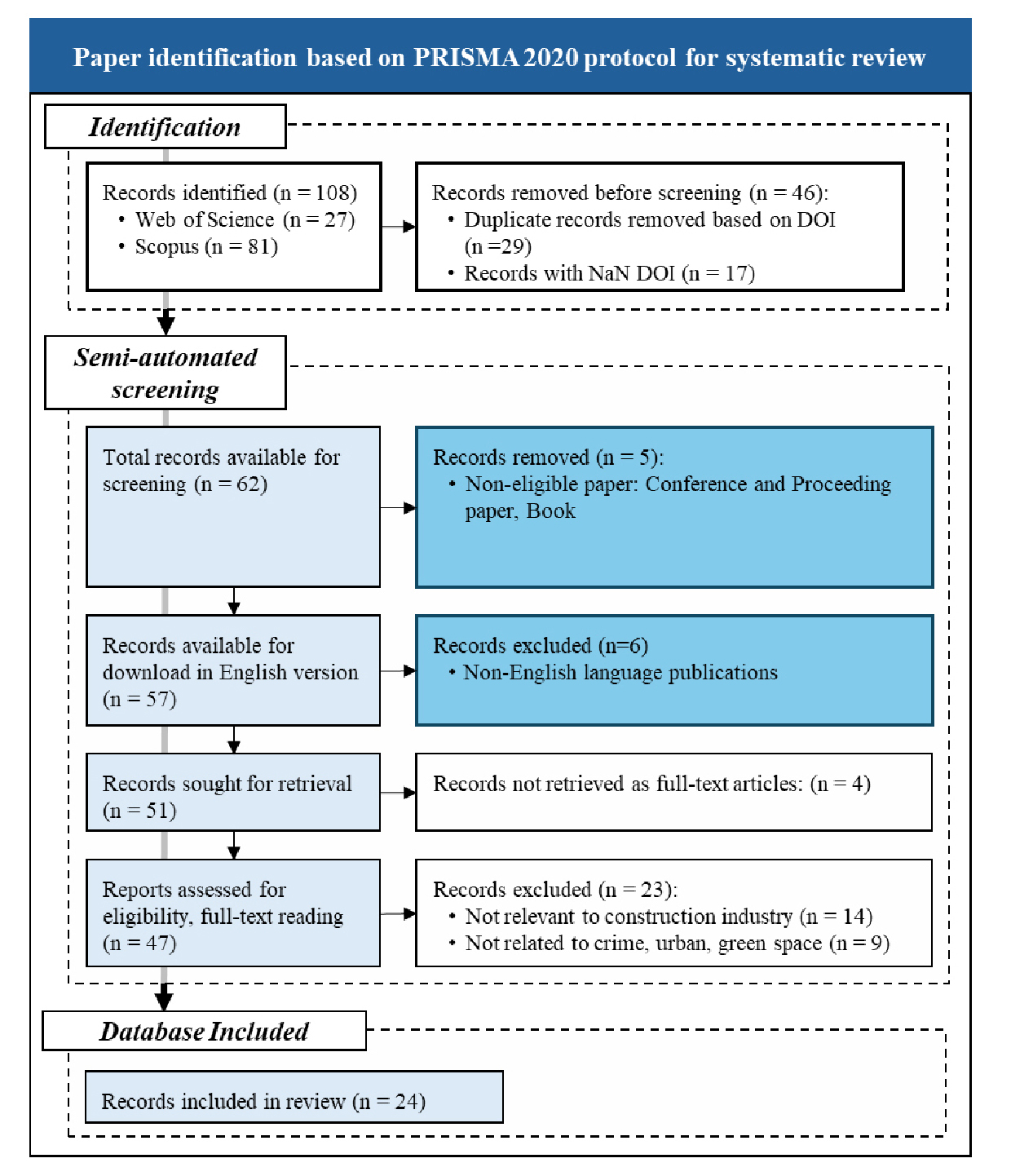
- The role of green infrastructure in crime prevention: A systematic analysis of crime, social cohesion, and sustainable development using PRISMA
- Kyle Hwang and Bosik Son
- This research systematically explores the interrelationships among urban green space design, crime prevention, and perceived safety to evaluate their collective contribution to …
- This research systematically explores the interrelationships among urban green space design, crime prevention, and perceived safety to evaluate their collective contribution to sustainable urban development. Using a PRISMA-guided systematic literature review of 24 studies, the research identifies three thematic domains: (1) green space design and safety perceptions, (2) spatial planning and environmental crime prevention, and (3) green infrastructure and its social outcomes. The findings demonstrate that design features such as visibility, lighting, and vegetation management positively influence safety perceptions and reduce crime occurrence. Spatial planning strategies grounded in CPTED principles further support crime mitigation but often overlook socioeconomic contexts and long-term impacts. Additionally, while green infrastructure projects yield social and economic benefits, disparities in access and maintenance challenge their equitable implementation. Notably, the psychological and social mechanisms underlying safety and cohesion remain insufficiently explored. The research suggests for future research employing longitudinal designs, AI-based spatial analytics, and equity- driven frameworks to enhance the design, accessibility, and safety performance of urban green spaces. - COLLAPSE
Journal Informaiton
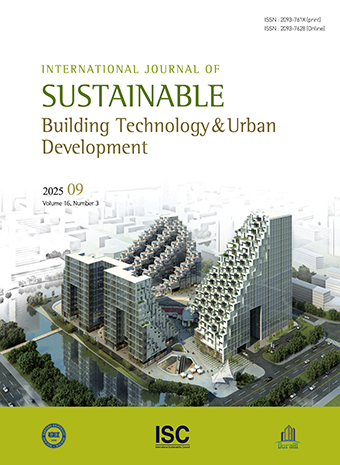 International Journal of Sustainable Building Technology and Urban Development
International Journal of Sustainable Building Technology and Urban Development
Journal Informaiton
Journal Informaiton - close
 International Journal of Sustainable Building Technology and Urban Development
International Journal of Sustainable Building Technology and Urban Development




